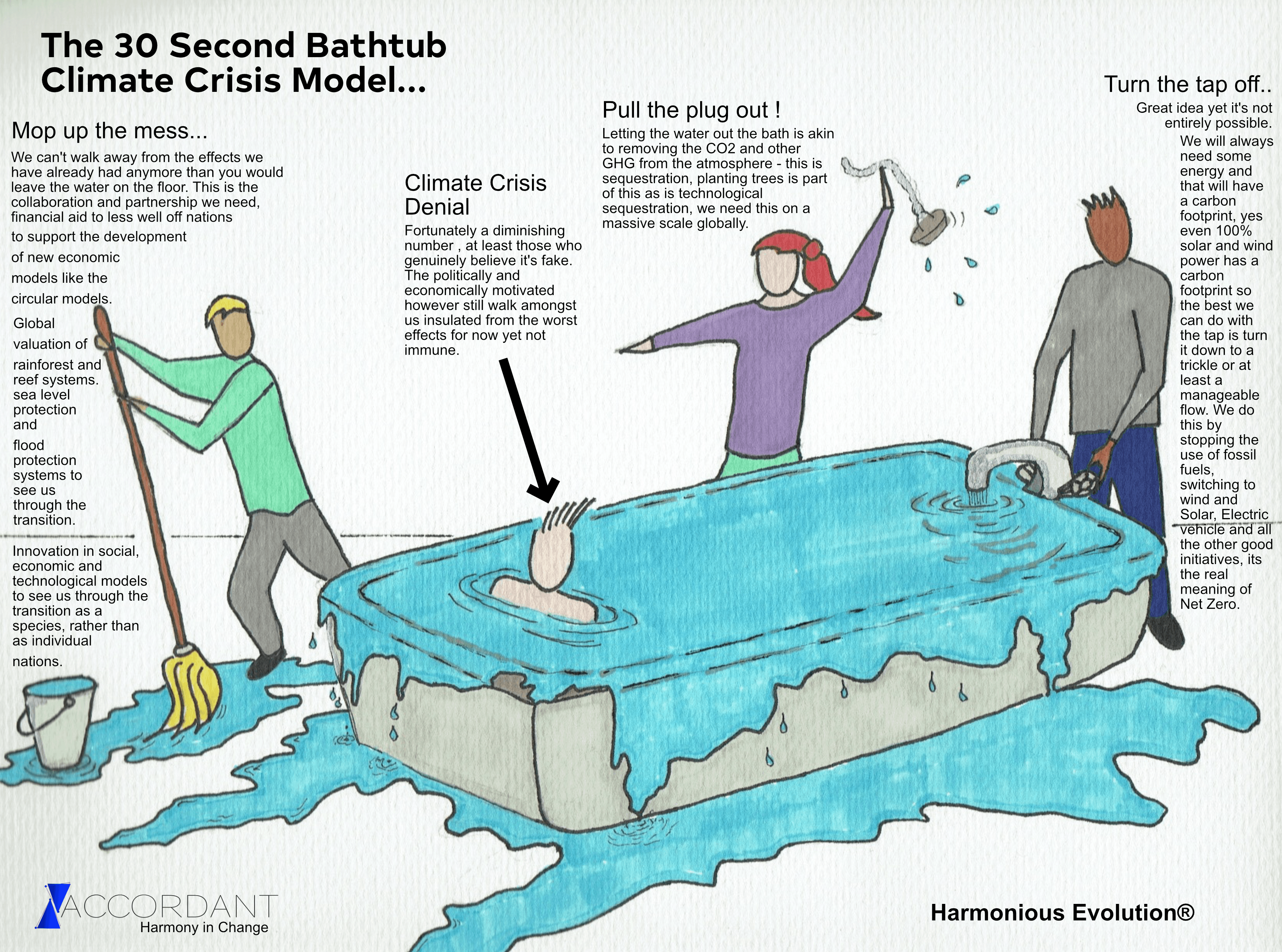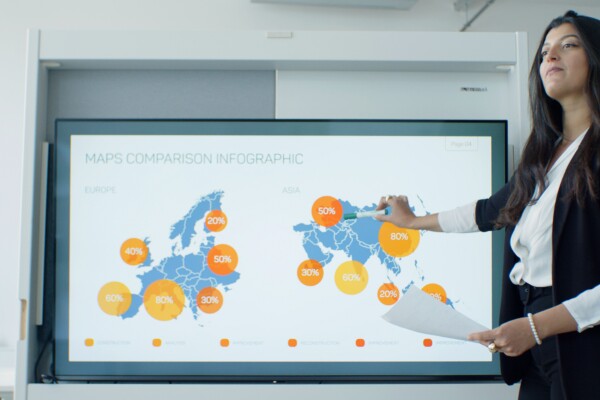As we enter into the final week of COP26, when most of the headlines will be focused on this agreement or that, and with the media clamouring for soundbites and gaffs, commitments made and promises reneged upon, it occurred to me that it may be worth putting it all into context – And in good old-fashioned terms, keeping it simple!
A while back I saw a poster comparing the climate crisis to an overflowing bath. And whilst it seemed a great analogy, it as yet felt incomplete. So I got my creative graphics head on, and here is my re-worked version, with a respectful nod to the original.
Turning off the tap….
The climate is heating up! Popular science tells us it’s Carbon Dioxide from burning fossil fuels. So, surely all we need to do is stop burning fossil fuels. Sadly, it’s not that simple. There are six or seven nasty greenhouse gases that are out there. Some are familiar – Methane for instance and Carbon Dioxide. Yet there are ones you also maybe haven’t met, such as Sulphur Hexafluoride (SF6). So stopping the burning of fossil fuels is a great strategy, and yes, we simply need to do that, yet there is more we also need to do. And we need a reality check too. We can turn down the tap to slow it down, but we cannot shut it off all together. The Earth has its own natural Carbon cycle, and we do need energy from somewhere. Solar and wind power are without doubt part of the future, but even these are not totally Carbon free – think about the steel used to build the towers, the minerals in the panels, the copper in the wiring – all must come from somewhere. So, the tap will not be shut off. However, we can find ways to reduce it to a trickle compared to the gushing flood it is today!
Pulling out the plug…
It seems so obvious. The analogy is simple – we need to reduce the water level to stop the flood. We need to get greenhouse gases out of the atmosphere.
Nature has been doing this all along and been using trees to do it. Oh, and also our reef systems and the oceans and permafrost… you get the idea. We don’t have many other tools, and unlike Earth, (let’s face it, the planet will likely survive without us – what we’re really focussing on saving here is humanity and all other life-forms on Earth!), we don’t have lots of time. So, we need to use the tools we do have, the biggest of which are trees. Stop cutting down the trees at such rates and plant more; lot’s more, across the world, fast-growing, slow-growing, diverse and appropriate for the ecology of the area. Problem: trees take a period to grow – That’s why we need to stop cutting the mature ones down!
Technology will emerge that can scale and will sequester Carbon Dioxide and other gases (that‘s the posh term for what trees do in this context, by the way). Yet to get them to run at the scale we need is hard, and running those machines itself takes energy. Reliance solely on sequestration technology is a false reassurance and limiting belief – we need to combine many approaches.
Mopping up the mess…
Of course you also wouldn’t leave the water on the floor would you! Sure, in time it would dry up / evaporate, but you wouldn’t likely do it by choice. We can’t ignore the fact that we have impacted the climate and weather patterns, and by extension, communities across the globe. It isn’t just climate change either, it’s plastic pollution, it’s waste, the whole gamut of run-away consumerism and exploitation of Earth’s natural resources. Yet, there is a silver lining – we got ourselves here and we have recognised it – and we are a species that have the smarts and know-how to fix it. We just need the will and the leadership (Hint Hint COP26). The problem is a global not national one; some nations are wealthy, and by virtue of that, their populations have a degree of insulation from the effects – That won’t last. Poorer nations less-so, and need our help. It is an ethical, as well as economic, technological, and ecological challenge. However, let’s not get carried away with ideology and emotionally biased arguments. We need to partner together, to collaborate and jointly innovate to build defences against rising sea levels, against floods and extreme weather events, to manage forests and control wildfires, and to share the technologies and innovations that will help us navigate together the transition period away from fossil fuel use and run-away consumerism, to the new world of circularity and sustainability, renewable energy sources and environmentally sensitive development.
Climate denial and the “It’s just not true” brigade
Genuine climate deniers are few and far between – most have a political or economic agenda. The positive truth is that even they are in an ever-diminishing number. I don’t believe that thought process of denial will ever disappear, yet I’m relieved that it’s an ever smaller voice – so let’s just move on, and take the actions that are needed.





